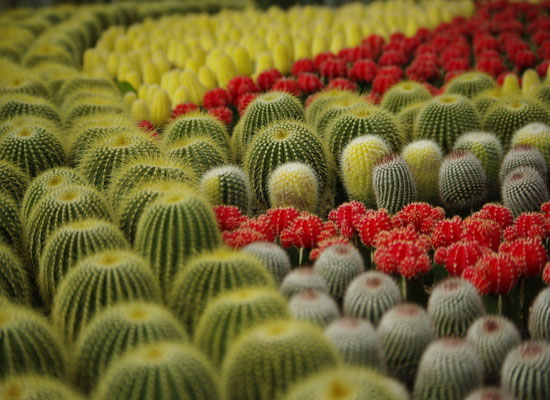Matters needing attention for how often cactus balls are watered
Many people like to suffer from obsessive-compulsive disorder when they raise plants, and they always like to water the plants with a spray can. It's good for moist plants, of course, but it's probably too much for plants like cactus. So, how often is the cactus watered? What are the points for attention in watering the cactus?

Let's first introduce some key points of watering the cactus first:
1. Don't water the newly bought cactus. Or the newly planted cactus, don't water it. As long as the soil is a little wetter. Because at this time, the root is not yet stable, and it cannot be absorbed even if it is watered. Too much watering can only increase its burden. This also has something to do with watering too much indoors.
two。 In winter, the cactus stops growing dormant and does not water. At this time, it is best to strictly control the water. No matter how dry the soil in the flowerpot looks, don't water it. Because even if it is watered, it can not be absorbed, it can only increase its burden.
3. Autumn is in the growing period, and so is spring. When the temperature is not high or low at about 20 degrees, this state is suitable for them to grow. They can be watered once or twice a week. Because during the growing period, the water demand is relatively large, and it is impossible not to water it for a long time, and the cactus is easy to dry.
4. You should also water less in summer. Don't think that watering can cool it when it is hot. So when you see the soil is too dry, you keep watering it. Put it in a shaded place and appropriately reduce the number of watering times to avoid ball rot or root rot in the state of high temperature and humidity.
5. In fact, cactus does not need to stipulate how often to water, generally put outdoors, easy to dry, pour more, put indoors, less evaporation, less. Usually, you have to look at the basin soil, dry it and then water it thoroughly. The basin soil is wet, so it doesn't have to be watered again.
In summer and winter balls and spring and autumn balls, summer and winter balls, watering should be paid attention to, at that time, due to the temperature is too high and too low, inhibit the growth of the ball, watering should be very careful. In winter, for most cactus, they enter their dormant period, during which the water is basically cut off. For balls raised indoors and outdoors, watering should also be different: outdoor air circulation, sufficient light, the medium is easy to dry, watering should be more diligent; indoor air circulation is poor, the light is weak, the medium is not easy to dry, watering should not be too frequent. In addition, the ball placed in the sunny place and the ball placed in the shade should be watered separately: the former should be watered more, and the latter should be watered for a longer time. In short, it is necessary to master it flexibly.
After we bring the plant home, we can't keep watering it because it's fresh for a while. You know, some drought-tolerant plants like cactus don't need to be watered often. When taking care of the cactus, you should consult more materials to understand its habits, so that you can keep your cactus well.
Related
- Wuhan Hospital Iron Tree Blooming Result Was Instantly Frightened by the Gardener Master
- Which variety of camellia is the most fragrant and best? Which one do you like best?
- What is the small blue coat, the breeding methods and matters needing attention of the succulent plant
- Dormancy time and maintenance management of succulent plants during dormancy
- Minas succulent how to raise, Minas succulent plant pictures
- What are the varieties of winter succulent plants
- How to raise succulent plants in twelve rolls? let's take a look at some experience of breeding twelve rolls.
- Attention should be paid to water control for succulent plants during dormant period (winter and summer)
- Watering experience of twelve rolls of succulent plants
- Techniques for fertilizing succulent plants. An article will let you know how to fertilize succulent plants.



